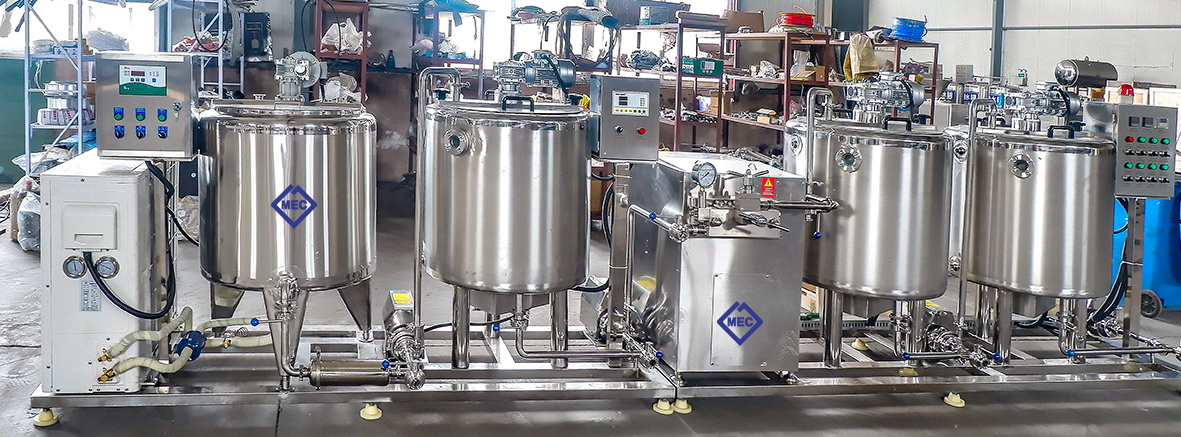The difference between fermentation tank and emulsification tank in milk production line

Fermentation tanks and emulsification tanks are widely used in beverage, chemical, food, dairy, condiment, brewing, pharmaceutical and other industries. They are common storage tanks in milk production lines and yogurt production lines. Although the shapes of fermentation tanks and emulsification tanks are somewhat similar, their working principles and functions are quite different.
The working principle of the fermentation tank: The fermentation tank is a kind of equipment for stirring and fermenting materials. The principle is to stir the materials to generate flow, so that the materials in the tank are well mixed, and the solids in the liquid remain suspended, which is conducive to the full contact between the solids and the nutrients. , to facilitate the absorption of nutrients, on the other hand, it can break the air bubbles, increase the gas-liquid contact area, improve the gas-liquid mass transfer rate, enhance the oxygen transfer effect, and eliminate air bubbles.
The working principle of the emulsification tank: When the milk production line is working, the emulsification head in the tank rotates at a high speed, thereby generating a strong suction, and then the material is sucked down by the strong suction of the emulsification head, and then thrown onto the stator, and ejected through the gap of the stator teeth, At the same time, the anti-vortex baffle at the bottom of the emulsification tank converts the rotational force into the up and down churning force. Through this repeated action, the materials in the tank are mixed evenly, and the powder materials are prevented from accumulating and agglomerating on the liquid surface, so as to achieve the purpose of emulsification and homogenization.
After understanding the working principle of emulsification tank and fermentation tank, we know the difference between these two kinds of equipment. In the production of milk production line, due to some special circumstances, the emulsification tank can replace the fermentation tank for fermentation treatment, but due to the difference in structure and agitator design, the fermentation tank cannot replace the emulsification tank for emulsification and homogenization.







 Tel:
Tel: WhatsApp:
WhatsApp: